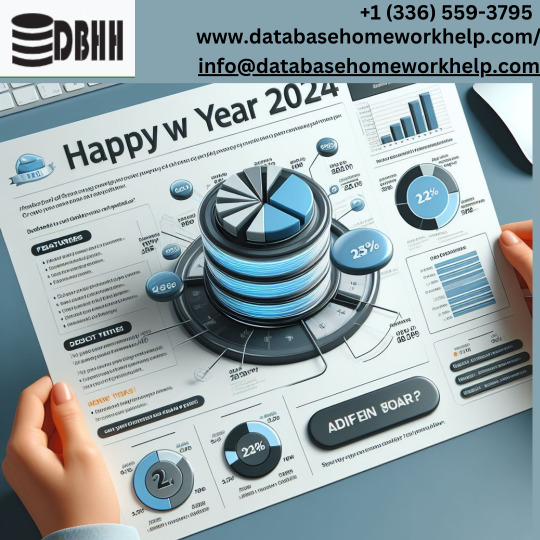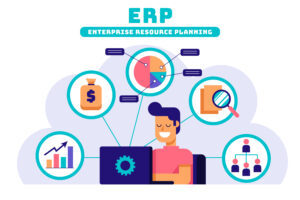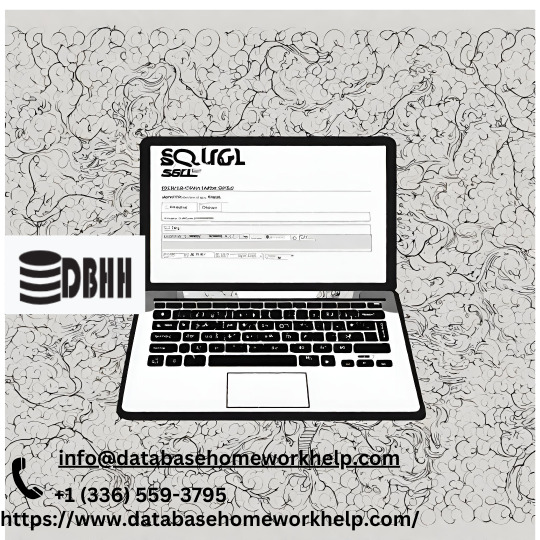#Oracle Database Support
Explore tagged Tumblr posts
Text
Remote Database Support Services -Remote DBA Service - Datapatroltech
Datapatroltech offers the remote database support services to protect company data . Data Patrol’s remote DBA services team includes top expertise in Oracle DBA support, SQL server support, MySQL DBA support, and Postgres DBA support besides others.We have 14 years plus experience in Remote DBA give 24*7 monitoring

1 note
·
View note
Text
If I were to make an Arkham style game.
Probably a dlc, because idk if there's enough to have a full game.
General
K so Bruce is dead, the mantle of the bat is sort of being filled by Cassandra, dealing with the rogues gallery, and Red Hood deals in the miscellaneous threats like the street gangs. The other bats are still there in support rolls of course, babs as Oracle, tim investigating, ect....
Specific
Main bad guy: Deathstroke
Very simplified plot - Slade tries taking over Gotham using his mind control serum and Jason calls on an expert to help. Unfortunately, his friend and his sister don't exactly get along.
Playable characters: Cassandra as the Bat, Jason as Red Hood, and Rose Wilson.
Cassandra has access to most of Bruce's stuff and plays the closest to him, but her 'detective vision' has her reading her opponents body language instead of a scanner. She also utilizes swords and knives over batarangs. She moves through Gotham with a grapple and gliding wings. (Movement similar to Arkham Batman moving around Gotham)
Jason has his guns, he has to use ladders on buildings and has climbing shoes to scale. He can jump from building to building, but he is slower and much heavier than Cass. His visor shows him tactical information and weak points, also connects him to databases with information on whoever he is scanning. (Movement is of a heavy strong character, like wolverine in the wolverine origins game)
Rose of course uses her swords, which she can use to climb up and slide down buildings. Rose utilizes a lot of parkour to move. Her form of 'detective vision' is her using her precognition to see where enemies will be ahead of time, with phantom versions of them moving ahead of them. ( Movement is similar to the assassins creed series)
Basic idea for looks


I think Rose would incorporate more red and white than this, but this is the vibe.

But with this mask

Specifically so that Rose can tease him about Red Hood not actually wearing a red hood.
Each playable character can call in one of three options of other members of the family/friends to help in fights.
Jason: Dick, Kate, Harper
Cass: Duke, Tim, Steph
Rose: Eddie, Jericho, Damian
#dc comics#rose wilson#jason todd#cassandra cain#arkhamverse#deathstroke#slade wilson#tim drake#dick grayson#damian wayne#stephanie brown#harper row#duke thomas
45 notes
·
View notes
Text
Database Success Awaits! Get 30% Off Your First Order - New Year, New Learning Journey! 🚀

Hey Database Enthusiasts! 🌐✨
Embarking on a journey to conquer the world of databases in the New Year? Look no further – DatabaseHomeworkHelp.com is your ultimate destination for all your database-related challenges! 🎉
Unlock Your Database Potential: Help with Oracle Homework 📚
Struggling with Oracle homework? We've got your back! Our team of expert tutors is ready to guide you through the intricacies of Oracle databases, ensuring your success in every assignment. Whether you're a beginner or an advanced learner, our personalized assistance will elevate your understanding of Oracle to new heights. Say goodbye to sleepless nights and welcome a stress-free learning experience!
Why Choose DatabaseHomeworkHelp.com?
Expert Guidance: Our tutors are seasoned professionals with years of hands-on experience in Oracle and other database systems.
Customized Solutions: Every student is unique, and so are their learning needs. Our tailored solutions ensure you grasp the concepts at your own pace.
24/7 Support: Got a burning question at 2 AM? Fret not! Our round-the-clock support is here to assist you whenever you need it.
Plagiarism-Free Content: We believe in originality. All our solutions are crafted from scratch, ensuring authenticity and excellence.
Ring in the New Year with a 30% Discount! 🎁🎊
To kickstart your learning journey in 2023, we're excited to offer an exclusive 30% discount on your first order! Just use the promo code NEWYEAR30 at checkout, and watch your learning experience transform.
How to Redeem Your Discount:
Visit DatabaseHomeworkHelp.com.
Place your order for Oracle homework help.
Enter the promo code NEWYEAR30 during checkout.
Enjoy a 30% discount on your first order!
Why Wait? Start Your Database Success Story Today!
Ready to ace your Oracle homework and set the stage for a successful database learning journey? Now is the perfect time! Don't miss out on this limited-time offer – use promo code NEWYEAR30 and claim your 30% discount today.
12 notes
·
View notes
Text
Today the interns brought me a webapp that they had built using django 5.0 because the build process keep failing when they tried deploying it to production. turns out only django 1.11 supports for our database (oracle 11g) and django LTS support ended 4 years ago for that version....
They were not happy when I told them the solution was to rewrite the entire thing.
#programming#legacy systems can be a real bitch#I swear web devs have an aneurysm when their framework is more than 6 months out of date
5 notes
·
View notes
Text
5 useful tools for engineers! Introducing recommendations to improve work efficiency
Engineers have to do a huge amount of coding. It’s really tough having to handle other duties and schedule management at the same time. Having the right tools is key to being a successful engineer.
Here are some tools that will help you improve your work efficiency.
1.SourceTree
“SourceTree” is free Git client software provided by Atlassian. It is a tool for source code management and version control for developers and teams using the version control system called Git. When developers and teams use Git to manage projects, it supports efficient development work by providing a visualized interface and rich functionality.
2.Charles
“Charles” is an HTTP proxy tool for web development and debugging, and a debugging proxy tool for capturing HTTP and HTTPS traffic, visualizing and analyzing communication between networks. This allows web developers and system administrators to observe requests and responses for debugging, testing, performance optimization, and more.
3.iTerm2
“iTerm2” is a highly functional terminal emulator for macOS, and is an application that allows terminal operations to be performed more comfortably and efficiently. It offers more features than the standard Terminal application. It has rich features such as tab splitting, window splitting, session management, customizable appearance, and script execution.
4.Navicat
Navicat is an integrated tool for performing database management and development tasks and supports many major database systems (MySQL, PostgreSQL, SQLite, Oracle, SQL Server, etc.). Using Navicat, you can efficiently perform tasks such as database structure design, data editing and management, SQL query execution, data modeling, backup and restore.
5.CodeLF
CodeLF (Code Language Framework) is a tool designed to help find, navigate, and understand code within large source code bases. Key features include finding and querying symbols such as functions, variables, and classes in your codebase, viewing code snippets, and visualizing relationships between code. It can aid in efficient code navigation and understanding, increasing productivity in the development process.
2 notes
·
View notes
Text
With SQL Server, Oracle MySQL, MongoDB, and PostgreSQL and more, we are your dedicated partner in managing, optimizing, securing, and supporting your data infrastructure.
For more, visit: https://briskwinit.com/database-services/
3 notes
·
View notes
Text
ERP Systems for Small and Medium-Sized Businesses in Saudi Arabia: What to Consider?

What Is an ERP System
ERP stands for “Enterprise Resource Planning” and refers to a type of software system that manages and integrates a range of business processes across an organization.
ERP systems provide a centralized database that can be accessed by different departments within an organization handling various business processes such as finance, procurement, production, inventory management, human resources, and customer relationship management. ERP systems integrate these processes to provide a comprehensive view of the entire organization and help to improve operational efficiency and decision-making.
Market Trend for ERP Systems
Research and Markets, the global market research firm, indicates that the ERP software market in Saudi Arabia would grow at a rate of around 17.4% between 2020 and 2025, primarily due to escalating demand for business process automation and the need for data-driven decisions. A robust ERP system is the best way forward for any business to succeed.
Features of ERP Systems
That said, let’s take a look at some of the key features of a good ERP system.
Integration of different business processes and departments
Centralized database with real-time data
Standardization of business processes
Automation of routine tasks
Reporting and analytics capabilities
User access controls to ensure data security
Scalability to support the growth of the organization
Key Considerations for Choosing the Best ERP Software
There are several popular ERP systems in Saudi Arabia such as Oracle ERP Cloud, SAP Business One, Microsoft Dynamics 365, Sage 300, Infor ERP, and Hal Business Success ERP. However, you need to pay attention to the following factors while choosing the best ERP software system that would meet your needs.ConsiderationDescriptionBusiness needsThe system should be able to support the business processes that need to be automated or streamlined ScalabilityThe ERP system should be able to support the future growth of the organizationIntegrationThe ERP system should be able to integrate seamlessly with the organization’s other business applications or systemsCustomizationIt should be possible to customize the ERP system to meet the specific needs of the organizationUser friendlinessThe ERP system should be easy to use and the required training and support should be available for usersSecurityThe system needs to have adequate security features including data encryption and user access controls
ERP systems are thus designed to benefit small and medium-sized businesses, manage their resources and improve efficiency through streamlined business processes, improved decision-making, enhanced visibility and better collaboration. These systems support growth and customer satisfaction and drive the businesses to scale greater heights.
Source Link : https://halsimplify.com/blog/erp-systems-for-small-and-medium-sized-businesses-in-saudi-arabia-what-to-consider/
2 notes
·
View notes
Text
Geeta University: A Leading Destination for Computer Science and Engineering Education in India.
Computer Science and Engineering (CSE) has become one of the most popular and in-demand fields of study in India. With the growth of the digital economy, there is an increasing need for skilled CSE professionals in various industries such as software development, cybersecurity, artificial intelligence, data analytics, and more. As a result, many universities in India are offering CSE programs to cater to the growing demand for qualified CSE graduates. Geeta University is one such institution that has emerged as a top destination for CSE education in India.
Geeta University, is a private university located in the city of Panipat, Haryana. It was established in 2022 and is affiliated with the University Grants Commission (UGC). The university offers a range of undergraduate, postgraduate, and doctoral programs in various fields, including CSE.
Geeta University's CSE program is designed to equip students with the knowledge and skills needed to succeed in the ever-evolving field of computer science. The curriculum covers a wide range of topics, including programming languages, algorithms, data structures, computer networks, operating systems, database management systems, software engineering, and more. The program also includes practical sessions, projects, and internships to provide students with hands-on experience in real-world scenarios.
One of the key features of Geeta University's CSE program is its focus on industry-relevant skills. The university has established partnerships with leading IT companies to provide students with exposure to the latest technologies and industry trends. This enables students to stay up-to-date with the latest developments in the field and develop the skills needed to succeed in the industry. The university also offers a range of certification programs, including Cisco Certified Network Associate (CCNA), Oracle Certified Professional (OCP), and Red Hat Certified System Administrator (RHCSA), to help students enhance their employability.
Geeta University's CSE program is taught by a team of experienced and qualified faculty members who are experts in their respective fields. The faculty members use a variety of teaching methods, including lectures, discussions, case studies, and hands-on activities, to ensure that students have a thorough understanding of the subject matter. The faculty members are also involved in research and development activities, which helps them stay updated with the latest developments in the field.
The university has state-of-the-art infrastructure and facilities to support its CSE program. The campus is spread over 35 acres and includes modern classrooms, labs, a library, a sports complex, and more. The labs are equipped with the latest hardware and software, including high-performance computing systems, servers, and networking equipment. The library has a vast collection of books, journals, and online resources to support research and learning.
Geeta University's CSE program has been recognized by various accreditation bodies and rankings. The university is accredited by the National Assessment and Accreditation Council (NAAC) with an "A" grade. It has also been ranked among the top 100 engineering colleges in India by NIRF (National Institutional Ranking Framework) and Outlook-ICARE (Indian Centre for Academic Rankings and Excellence).
In conclusion, Geeta University has emerged as a leading destination for CSE education in India. Its CSE program is designed to provide students with the knowledge and skills needed to succeed in the industry. The university's focus on industry-relevant skills, experienced faculty, modern infrastructure, and accreditation and rankings make it a top choice for students seeking quality CSE education in India
#top university in india#Best university in engineering and computer science#Great university#Great experience
2 notes
·
View notes
Text
Career Path and Growth Opportunities for Integration Specialists
The Growing Demand for Integration Specialists.
Introduction
In today’s interconnected digital landscape, businesses rely on seamless data exchange and system connectivity to optimize operations and improve efficiency. Integration specialists play a crucial role in designing, implementing, and maintaining integrations between various software applications, ensuring smooth communication and workflow automation. With the rise of cloud computing, APIs, and enterprise applications, integration specialists are essential for driving digital transformation.
What is an Integration Specialist?
An Integration Specialist is a professional responsible for developing and managing software integrations between different systems, applications, and platforms. They design workflows, troubleshoot issues, and ensure data flows securely and efficiently across various environments. Integration specialists work with APIs, middleware, and cloud-based tools to connect disparate systems and improve business processes.
Types of Integration Solutions
Integration specialists work with different types of solutions to meet business needs:
API Integrations
Connects different applications via Application Programming Interfaces (APIs).
Enables real-time data sharing and automation.
Examples: RESTful APIs, SOAP APIs, GraphQL.
Cloud-Based Integrations
Connects cloud applications like SaaS platforms.
Uses integration platforms as a service (iPaaS).
Examples: Zapier, Workato, MuleSoft, Dell Boomi.
Enterprise System Integrations
Integrates large-scale enterprise applications.
Connects ERP (Enterprise Resource Planning), CRM (Customer Relationship Management), and HR systems.
Examples: Salesforce, SAP, Oracle, Microsoft Dynamics.
Database Integrations
Ensures seamless data flow between databases.
Uses ETL (Extract, Transform, Load) processes for data synchronization.
Examples: SQL Server Integration Services (SSIS), Talend, Informatica.
Key Stages of System Integration
Requirement Analysis & Planning
Identify business needs and integration goals.
Analyze existing systems and data flow requirements.
Choose the right integration approach and tools.
Design & Architecture
Develop a blueprint for the integration solution.
Select API frameworks, middleware, or cloud services.
Ensure scalability, security, and compliance.
Development & Implementation
Build APIs, data connectors, and automation workflows.
Implement security measures (encryption, authentication).
Conduct performance optimization and data validation.
Testing & Quality Assurance
Perform functional, security, and performance testing.
Identify and resolve integration errors and data inconsistencies.
Conduct user acceptance testing (UAT).
Deployment & Monitoring
Deploy integration solutions in production environments.
Monitor system performance and error handling.
Ensure smooth data synchronization and process automation.
Maintenance & Continuous Improvement
Provide ongoing support and troubleshooting.
Optimize integration workflows based on feedback.
Stay updated with new technologies and best practices.
Best Practices for Integration Success
✔ Define clear integration objectives and business needs. ✔ Use secure and scalable API frameworks. ✔ Optimize data transformation processes for efficiency. ✔ Implement robust authentication and encryption. ✔ Conduct thorough testing before deployment. ✔ Monitor and update integrations regularly. ✔ Stay updated with emerging iPaaS and API technologies.
Conclusion
Integration specialists are at the forefront of modern digital ecosystems, ensuring seamless connectivity between applications and data sources. Whether working with cloud platforms, APIs, or enterprise systems, a well-executed integration strategy enhances efficiency, security, and scalability. Businesses that invest in robust integration solutions gain a competitive edge, improved automation, and streamlined operations.
Would you like me to add recommendations for integration tools or comparisons of middleware solutions? 🚀
Integration Specialist:
#SystemIntegration
#APIIntegration
#CloudIntegration
#DataAutomation
#EnterpriseSolutions
0 notes
Text
Steps of migration From Windows to Linux Using RMAN Transportable Database
Move an Oracle database from Windows to Linux using the RMAN Transportable Database method. Move the Oracle Database from Windows Platform to Linux Platform using RMAN Transportable method with following steps: Step 1: Check the list of supported database with Operating system version from the following view: col platform_name for a35 set pagesize 1000 select * from v$transportable_platform…
0 notes
Text
Top Cloud Server Companies in India To Secure Data
These days, businesses desire more improvements in processes, de-duplicate data, and, above all, secure their information. Their main concern has now been efficiently addressed by the innovation that became known as “the cloud.” The technology, which revolutionized information storage, management, and processing, now transforms organizations from the inside out.
The evolution story of business today got a new milestone in the development of cloud server companies in India: scalable solutions driven by efficiency and security factors.
Just think of your business in a world without any infrastructural constraints, where it is free to access your data and applications from anywhere, even the other side of the globe. As if this flexibility were insufficient, the cloud ensures your business is shielded against cyber threats through the best and most robust cloud security mechanisms.
With companies exponentially moving to cloud solutions, demand for dependable cloud services has skyrocketed. But with so many service providers standing ready to supply this solution, which one do you choose?

However, let’s take a look into a few stats and data before delving deep.
Cloud computing’s market share was $371 billion in 2020, according to statistics, and is expected to grow at a 17.5% CAGR to reach $832.1 billion by 2025.
Cloud computing is used in the operations of 94% of businesses globally.
With a 32% cloud market share, AWS was the industry leader.
By 2025, it is anticipated that 85% of businesses will adopt a cloud-first strategy.
The insurance industry employs hybrid designs in 73% of cases.
Global Cloud Computing made $331 billion and is expected to increase by 23%
The cloud computing market in India has witnessed exponential growth over the past decade. With businesses transitioning to digital platforms, cloud servers have become the backbone of IT infrastructure. Several top-tier cloud service providers cater to Indian businesses, offering robust, scalable, and secure cloud solutions. Let’s explore some of the leading cloud server companies in India and how VSN International stands out as a profitable choice for businesses.
Top Cloud Server Companies in India
1. Amazon Web Services (AWS)
AWS is the most dominant cloud service provider globally and in India. It offers a wide range of cloud computing services, including computing power, storage, and networking.
Features:
Pay-as-you-go pricing model
Reliable infrastructure with multiple data centers in India
High security and compliance with industry standards
Scalable computing and storage solutions
2. Microsoft Azure
Microsoft Azure is another leading cloud platform providing enterprise-grade cloud solutions with integration into Microsoft’s ecosystem.
Features:
Hybrid cloud capabilities
AI and machine learning services
Advanced cybersecurity tools
Seamless integration with Microsoft 365 and other enterprise solutions
3. Google Cloud Platform (GCP)
GCP offers high-performance cloud computing solutions and data analytics tools, making it a preferred choice for businesses focused on big data and AI.
Features:
AI-powered analytics and big data solutions
Multi-cloud support and interoperability
Secure and scalable cloud storage
Competitive pricing for startups and enterprises
4. IBM Cloud
IBM Cloud provides a mix of public, private, and hybrid cloud solutions tailored for enterprises that require advanced AI and blockchain services.
Features:
AI-driven cloud computing
Blockchain and quantum computing solutions
High-performance computing with enterprise-grade security
Flexible hybrid cloud deployment options
5. Oracle Cloud
Oracle Cloud is known for its powerful database and cloud infrastructure solutions, catering to businesses that require extensive data processing capabilities.
Features:
Advanced database management services
High-speed networking and computing capabilities
Autonomous cloud security features
Cost-effective solutions for large enterprises
6. VSN International – A Profitable Cloud Partner for Your Business
While global giants dominate the cloud market, VSN International has emerged as a reliable and cost-effective cloud service provider tailored for Indian businesses.
Why Choose VSN International?
Custom Cloud Solutions: Unlike generic cloud providers, VSN International offers customized cloud infrastructure suited for small, medium, and large enterprises.
Competitive Pricing: Our cost-effective pricing models ensure businesses get the best cloud services without overpaying.
24/7 Local Support: We provide dedicated customer support to address any cloud-related concerns in real-time.
Seamless Integration: VSN International’s cloud solutions integrate effortlessly with third-party software and existing IT ecosystems.
Scalability & Flexibility: Businesses can scale their cloud usage as per their growth without incurring unnecessary costs.
Enhanced Security: With advanced security protocols and data protection measures, businesses can operate with confidence.
How VSN’s Cloud Services Is Profitable For Businesses
VSN Cloud is the highest quality cloud service provider in India, most known for innovative solutions and excellent customer service. The core philosophy of delivering high robust cloud security with reliable cloud services makes it a fit for all business sizes.
Their cloud infrastructure is designed to be highly scalable and flexible so that an organization can quickly change to meet changing demand.
Our Services Include
Managed Cloud Hosting: Comprehensive solutions that ensure optimal performance and security.
Disaster Recovery: Good backups and recovery services preserve critical data.
Cloud Consulting: Expert guidance to help companies navigate the path of a successful cloud.
VSN makes sure that a safe and reliable cloud environment is at the disposal of the company for its benefit. This has pulled businesses towards adopting cloud technology.
#cloud services#cloud solutions#it services#cloud technology#cloudcomputing#cloud consulting services
0 notes
Text
Mastering Oracle with Ease: DatabaseHomeworkHelp Oracle Has Your Back
Hey Oracle enthusiasts and students struggling with database homework! 🌟 If you've ever found yourself drowning in the complexities of Oracle assignments, fret not – there's a lifesaver in the vast sea of academia. Let me introduce you to DatabaseHomeworkHelp.com/Oracle, your go-to platform for conquering Oracle challenges without breaking the bank.
Affordable Oracle Assistance: A Reality Check
We get it – being a student often means tight budgets and limited resources. That's why DatabaseHomeworkHelp.com/Oracle stands out, offering top-notch Oracle homework assistance at prices that won't leave your pockets empty. This platform believes in making academic support accessible to everyone.
The Oracle Gurus Behind the Scenes
Oracle is no walk in the park, and that's where the expertise of DatabaseHomeworkHelp.com/Oracle shines. Imagine having seasoned Oracle professionals at your fingertips, ready to guide you through the intricacies of SQL queries, PL/SQL programming, and database architecture. That's precisely what this platform delivers – expert tutors who know Oracle inside out.
Tailored Solutions for Every Oracle Quandary
Oracle assignments come in all shapes and sizes. Whether you're dealing with fundamental SQL concepts or grappling with the intricacies of PL/SQL procedures, DatabaseHomeworkHelp.com/Oracle provides tailor-made solutions for every Oracle challenge. No task is too big or too small – they've got you covered.
Unlock the Oracle Kingdom – How It Works
Navigating DatabaseHomeworkHelp.com/Oracle is a breeze. Head over to the Oracle-specific section at https://www.databasehomeworkhelp.com/oracle/ and let the journey begin. Submit your assignment details, outline your requirements, and connect with an experienced Oracle tutor who's ready to guide you to success.
Real Success, Real Stories
Don't just take our word for it – let the success stories speak for themselves. Students who've ventured into the Oracle realm with DatabaseHomeworkHelp.com/Oracle share tales of improved grades, heightened understanding, and a newfound confidence in tackling Oracle assignments.
The Oracle Odyssey Awaits You
In conclusion, if the phrase "do my Oracle homework" has ever crossed your mind, DatabaseHomeworkHelp.com/Oracle is your ticket to academic triumph. Say goodbye to Oracle-induced headaches and hello to a world where Oracle mastery is within reach.
Invest in your Oracle proficiency today and witness the transformative power of personalized, affordable assistance. DatabaseHomeworkHelp.com/Oracle is not just a platform; it's your partner in Oracle success.

9 notes
·
View notes
Text
AWS RDS: Unlocking Cloud SQL Power
1. Introduction Brief Explanation AWS RDS (Relational Database Service) is a managed database service that simplifies the setup, management, and scaling of relational databases in the cloud. It supports popular database engines like MySQL, PostgreSQL, SQL Server, and Oracle, allowing businesses to focus on application development rather than database administration. Importance In the cloud…
0 notes
Text
With SQL Server, Oracle MySQL, MongoDB, and PostgreSQL and more, we are your dedicated partner in managing, optimizing, securing, and supporting your data infrastructure.
For more, visit: https://briskwinit.com/database-services/
3 notes
·
View notes
Text
Informatica Training in Chennai | Informatica Cloud IDMC
The Role of the Secure Agent in Informatica Cloud
Introduction
Informatica Cloud is a powerful data integration platform that enables businesses to connect, transform, and manage data across cloud and on-premises environments. One of its core components is the Secure Agent, which plays a crucial role in facilitating secure communication between Informatica Cloud and an organization's local network. This article explores the role, functionality, and benefits of the Secure Agent in Informatica Cloud.

What is the Secure Agent?
The Secure Agent is a lightweight, self-upgrading runtime engine installed on a customer’s local network or cloud infrastructure. It acts as a bridge between on-premises applications, databases, and Informatica Intelligent Cloud Services (IICS). By using the Secure Agent, businesses can process, integrate, and synchronize data between cloud and on-premises sources securely. Informatica Cloud IDMC Training
Key Roles and Responsibilities of the Secure Agent
1. Secure Data Movement
The Secure Agent ensures safe and encrypted data transmission between on-premises systems and Informatica Cloud. It eliminates the need to expose sensitive business data directly to the internet by handling all connections securely behind a company’s firewall.
2. Data Integration and Processing
A primary function of the Secure Agent is executing ETL (Extract, Transform, Load) and ELT (Extract, Load, Transform) processes. It extracts data from source systems, applies necessary transformations, and loads it into the target system. By running these processes locally, organizations can optimize performance while maintaining data security.
3. Job Execution and Management
The Secure Agent is responsible for executing data integration tasks, mapping configurations, and workflow automation. It supports various Informatica Cloud services, including: Informatica IICS Training
Data Integration
Application Integration
API Management
Data Quality
Master Data Management (MDM)
It efficiently manages job execution, ensuring data pipelines operate smoothly.
4. Connectivity with On-Premises and Cloud Sources
Organizations often have hybrid environments where some data resides in on-premises databases while others exist in cloud platforms. The Secure Agent enables seamless connectivity to databases like Oracle, SQL Server, MySQL, and applications such as SAP, Salesforce, Workday, and more.
5. Security and Compliance
Security is a major concern for enterprises handling sensitive data. The Secure Agent ensures that data remains within the organization’s control by encrypting data at rest and in transit. It complies with industry standards like GDPR, HIPAA, and SOC 2 to maintain robust data security.
Benefits of Using the Secure Agent: Informatica IDMC Training
1. Enhanced Security
Prevents data exposure to the internet
Uses encryption and secure authentication mechanisms
Runs behind the firewall, ensuring compliance with security policies
2. Performance Optimization
Enables on-premises data processing, reducing latency
Supports parallel execution of tasks for better efficiency
Handles large volumes of data with optimized performance
3. Scalability and Reliability
Auto-upgrades to the latest versions without manual intervention
Distributes workloads efficiently, ensuring high availability
Handles failures through automatic retries and error logging
4. Simplified Management
Intuitive UI for monitoring and managing tasks
Seamless integration with Informatica Cloud for centralized administration
No need for complex firewall configurations or VPN setups
How to Install and Configure the Secure Agent
Setting up the Secure Agent is straightforward: Informatica Cloud Training
Download the Secure Agent from the Informatica Cloud UI.
Install the agent on a local server or cloud instance.
Authenticate the agent using the provided credentials.
Configure connectivity to required on-premises or cloud applications.
Verify the installation and start running data integration tasks.
Conclusion
The Secure Agent in Informatica Cloud is a crucial component for organizations looking to integrate and process data securely across hybrid environments. It ensures seamless connectivity, secure data movement, optimized performance, and compliance with industry standards. By leveraging the Secure Agent, businesses can achieve robust data integration without compromising security or performance, making it an essential tool in the modern data landscape.
For More Information about Informatica Cloud Online Training
Contact Call/WhatsApp: +91 7032290546
Visit: https://www.visualpath.in/informatica-cloud-training-in-hyderabad.html
#Informatica Training in Hyderabad#IICS Training in Hyderabad#IICS Online Training#Informatica Cloud Training#Informatica Cloud Online Training#Informatica IICS Training#Informatica IDMC Training#Informatica Training in Ameerpet#Informatica Online Training in Hyderabad#Informatica Training in Bangalore#Informatica Training in Chennai#Informatica Training in India#Informatica Cloud IDMC Training
0 notes
Text
SQL Server: A Comprehensive Overview
SQL Server, developed by Microsoft, is a powerful relational database management system (RDBMS) used by organizations worldwide to manage and store data efficiently. It provides a robust platform for database operations, including data storage, retrieval, security, and analysis SQL Server is known for its scalability, reliability, and integration with other Microsoft services, making it a preferred choice for businesses of all sizes.
Key Features of SQL Server
1. Scalability and Performance
SQL Server is designed to handle large-scale databases while maintaining high performance. With features like in-memory processing, indexing, and optimized query execution, it ensures fast data retrieval and efficient processing, even with massive datasets.
2. Security and Compliance
Data security is a critical concern, and SQL Server addresses this with advanced security features such as:
Transparent Data Encryption (TDE): Encrypts the database at rest.
Row-Level Security (RLS): Restricts access to specific rows within a table based on user permissions.
Dynamic Data Masking (DDM): Protects sensitive data by masking it during query execution.
Always Encrypted: Ensures data remains encrypted both at rest and in transit.
3. High Availability and Disaster Recovery
SQL Server ensures continuous availability through features such as:
Always On Availability Groups: Provides failover support and high availability for critical databases.
Database Mirroring and Log Shipping: Helps maintain real-time data replication and backup solutions.
Backup and Restore Capabilities: Ensures data recovery in case of system failures.
4. Business Intelligence and Data Analytics
SQL Server includes built-in tools for business intelligence (BI) and analytics, allowing organizations to gain insights from their data. Features include:
SQL Server Analysis Services (SSAS): Enables data mining and multidimensional analysis.
SQL Server Integration Services (SSIS): Facilitates data extraction, transformation, and loading (ETL).
SQL Server Reporting Services (SSRS): Allows for the creation of interactive reports and dashboards.
5. Integration with Cloud and AI
SQL Server seamlessly integrates with Microsoft Azure, enabling hybrid cloud solutions. Additionally, it supports artificial intelligence (AI) and machine learning (ML) capabilities, allowing users to perform predictive analytics and automate decision-making processes.
SQL Server Editions
Microsoft offers SQL Server in different editions to cater to various business needs:
Enterprise Edition: Designed for large-scale applications with high performance and security requirements.
Standard Edition: Suitable for mid-sized businesses with essential database functionalities.
Express Edition: A free version with limited features, ideal for small applications and learning purposes.
Developer Edition: Offers full Enterprise Edition capabilities but is licensed for development and testing only.
SQL Server vs. Other RDBMS
While SQL Server is a leading database management system, it competes with other RDBMS like MySQL, PostgreSQL, and Oracle Database. Here’s how it compares:
Ease of Use: SQL Server has a user-friendly interface, particularly for Windows users.
Security Features: Provides robust security compared to MySQL and PostgreSQL.
Integration with Microsoft Ecosystem: Works seamlessly with tools like Power BI, Azure, and Office 365.
Licensing Costs: SQL Server can be more expensive than open-source databases like MySQL and PostgreSQL.
Conclusion
SQL Server is a powerful and versatile database management system that supports businesses in managing their data efficiently. With features like scalability, security, high availability, and cloud integration, it remains a top choice for enterprises looking for a reliable RDBMS. Whether used for small applications or large-scale enterprise systems, SQL Server continues to evolve with new advancements, making it an essential tool for modern data management.
0 notes